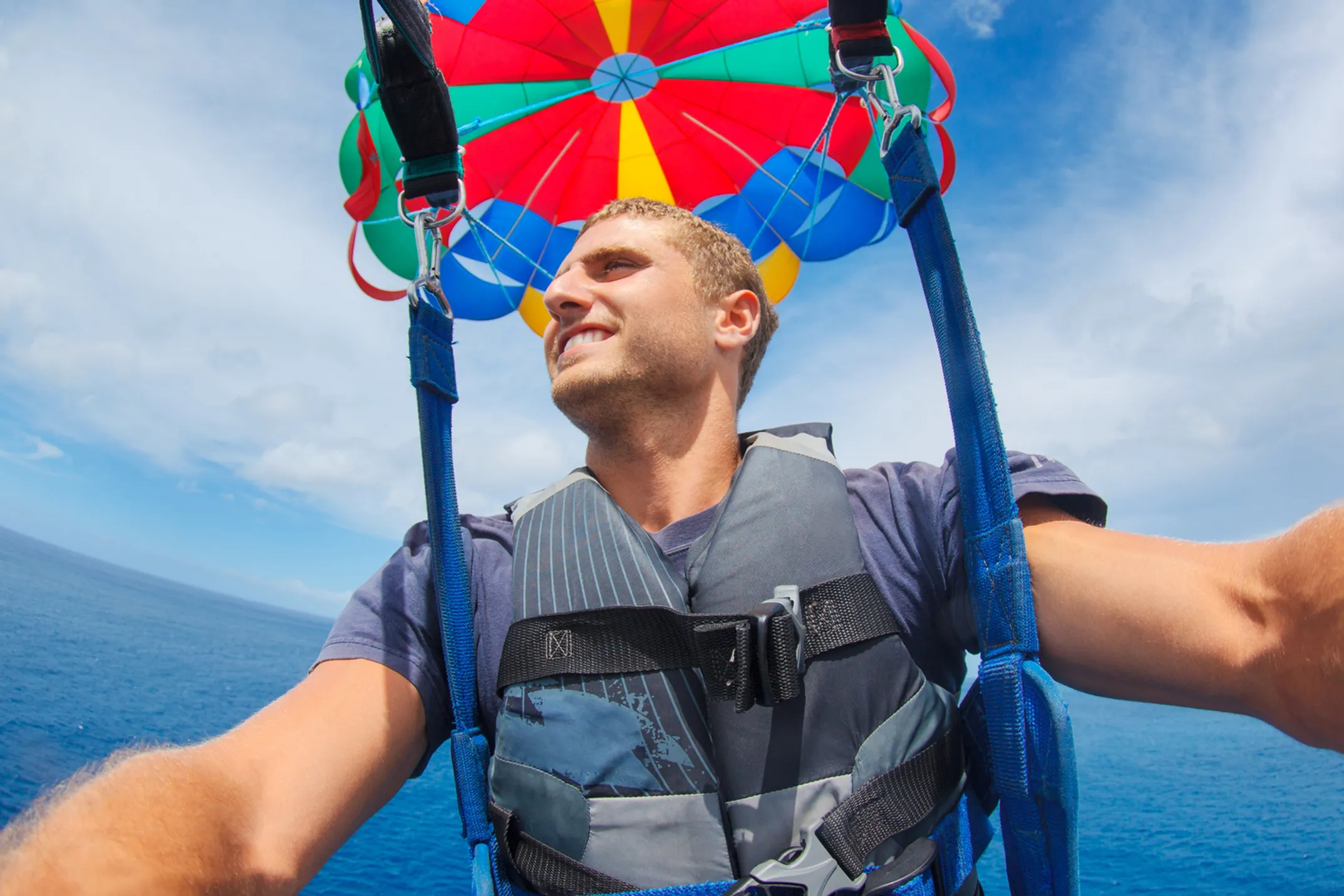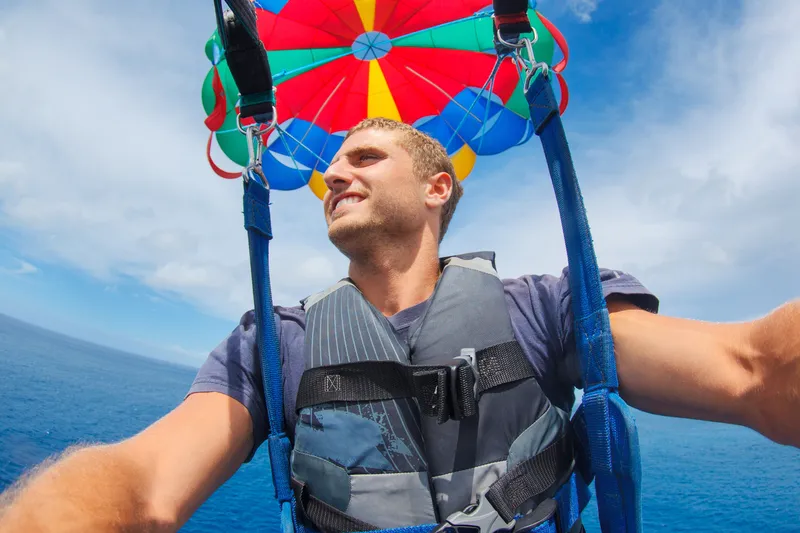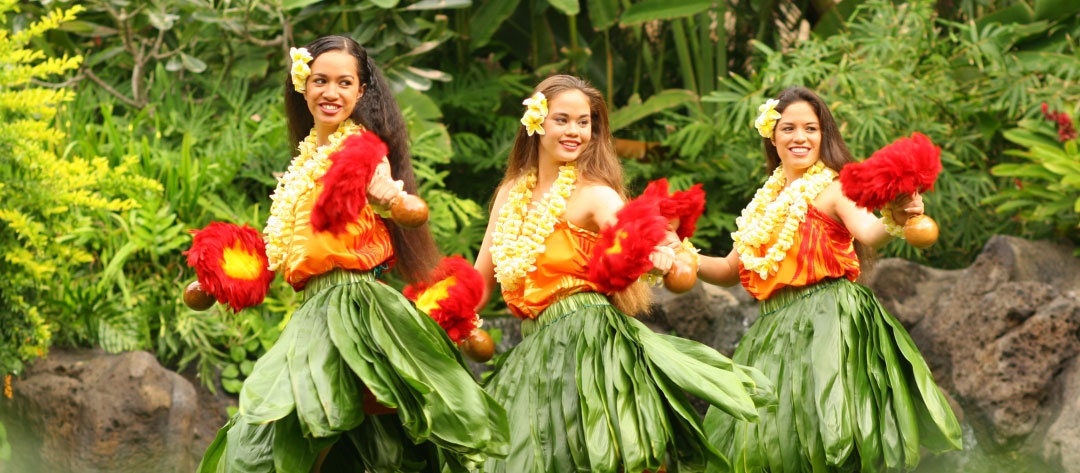

Parasailing FAQ
Your most common questions about parasailing in Hawaii, answered

Written by a Local Expert
Jade KawanuiFrequently Asked Questions About Parasailing in Hawaii
It's natural to have questions before you take flight. Here are answers to some of the most common worries from first-time flyers and practical questions about planning your parasailing adventure.
Safety & Fear Concerns
Q: Is parasailing scary? What if I'm afraid of heights?
This is the most common concern, but most people find the experience surprisingly peaceful and calm, not scary. The going up and coming down are slow and gradual, not like a thrill ride. For many with mild fear of heights, the secure harness and incredible view quickly beat any anxiety. It can be an empowering way to face and overcome that fear in a controlled, safe environment.
Q: Is there a risk of the rope breaking?
This is a valid fear, but with a good operator, the risk is virtually zero. Commercial towlines are made of high-strength synthetic materials designed to handle huge tension. Industry safety standards followed by professional operators require daily inspection of the entire line for wear and tear, plus a strict schedule for trimming and replacement to ensure strength.
Q: Do I need to know how to swim?
No. All takeoffs and landings happen on the boat's flight deck. You're required to wear a life vest at all times during the flight as standard safety, but you don't need to be a swimmer to participate.
Age & Physical Requirements
Q: What are the typical age and weight limits?
This varies slightly between operators but generally follows industry standards:
Age Requirements:
- • Minimum age: 5-6 years old
- • Children must fly with adult
- • No maximum age limit
Weight Limits:
- • Solo flight minimum: 150-160 lbs
- • Tandem maximum: ~450 lbs total
- • Captain has final say
Q: Can I fly by myself?
While solo flights are possible, tandem and triple flights are more common. Flying with more than one person helps balance the parachute and is often required for safety in certain wind conditions. If you're a single rider, you may be paired with another single rider or fly with a crew member, depending on the operator's policy and the day's conditions.
Flight Experience
Q: How long is the flight versus the whole trip?
The entire boat trip usually lasts about one hour. This includes the boat ride out to the flight area, time for all groups on the boat to fly, and the ride back to harbor. The actual time you spend in the air ranges from about 6 to 11 minutes, depending on the height package you buy.
Q: What's the famous "dip" everyone talks about?
Near the end of your flight, the captain might offer you a "dip." This fun move has the boat slow down so you descend until your feet or legs briefly touch the warm ocean before you're lifted back up. It's completely optional but totally worth it for that refreshing splash of excitement! Most people find it's the highlight of their flight.
Kauai & Inter-Island Questions
Q: Can I really not parasail on Kauai at all?
Correct - there are no commercial parasailing operators on Kauai right now. This comes down to how the island manages ocean activities. State and county groups like the Department of Land and Natural Resources and Kauai's Parks & Recreation office give out limited permits for ocean businesses. They want to protect the unique environment and keep everyone safe. While you'll find permits for kayaking and surf schools, parasailing isn't on that list currently.
Q: Is it worth doing a day trip from Kauai just for parasailing?
Absolutely! The flight from Lihue to Honolulu is only about 40 minutes, making it perfect for a day trip. Many visitors combine parasailing with other Oahu attractions like Pearl Harbor, Waikiki, or shopping. You can easily fit in parasailing, lunch, and sightseeing before returning to Kauai the same evening.
Weather & Seasonal Information
Q: Why can't I parasail on Maui during winter?
Maui has a mandatory seasonal closure from December 15th to May 15th each year to protect migrating humpback whales that come to Hawaiian waters to breed and have babies. During this time, all parasailing and certain other thrill activities are banned in Maui's coastal waters. This isn't just a guideline - it's strictly enforced by law to ensure the whales can safely complete their breeding cycle.
Q: What happens if the weather is bad on my scheduled day?
Professional operators will cancel or reschedule flights for safety when conditions aren't suitable. This includes winds over 20-25 mph, rough seas, storms, or poor visibility. While disappointing, this is exactly what you want from a safety-focused operator. Most companies offer full refunds or free rescheduling for weather cancellations.
Still Have Questions?
Ready to plan your parasailing adventure? Check out our comprehensive guides for planning and safety tips.
⚡ Quick Answers
📅 When to Go
Year-round availability
Year-round availability
May 16 - Dec 14 ONLY
Not available
🛡️ Safety Reminders
- Look for USCG licensed captains
- Good operators cancel for bad weather
- Equipment should look well-maintained
- Thorough safety briefing is essential
The History of Taking Flight & Beyond the Chute
The fun activity we know today has a fascinating history rooted in military innovation and post-war creativity. Understanding how it evolved adds another layer of appreciation to the experience.
The Military Origins (1962)
French engineer Pierre-Marcel Lemoigne developed the "ascending-gliding parachute" as a more efficient way to train paratroopers. By towing a soldier behind a vehicle, they could simulate flight experience without needing an airplane.
The Rise of Recreation (1970s)
Mark McCulloh's 1974 invention of the first self-contained parasail launch and recovery boat with hydraulic winch system revolutionized the sport, making it safe and accessible to everyone.
Parasailing Arrives in Paradise (1977)
Hawaiian Parasail brought the very first parasail to the islands. During their first flight off a beach in Hawaii Kai, concerned residents who had never seen such a thing flooded authorities with calls, thinking they'd seen a pilot ejecting from a crashing airplane!

Beyond the Chute: More Adventures on Kauai and Oahu
Since you'll be island-hopping for your parasailing fix, get your adrenaline rush on the Garden Isle with some of the best land-based adventures in all of Hawaii, or extend your Oahu visit with complementary activities.
Kauai Land Adventures
- Nāpali Coast boat tours
- Hanalei River kayaking
- Waimea Canyon hiking
- Zipline adventures
Oahu Day Trip Add-ons
- Pearl Harbor Memorial
- Coral Crater Adventure Park
- Waikiki Beach activities
- Diamond Head hiking
From quiet peace high above the ocean to rugged adventure park trails and solemn reflections at historic memorials, Hawaii offers a journey for every part of the soul. Embrace the spirit of aloha and explore it all.

